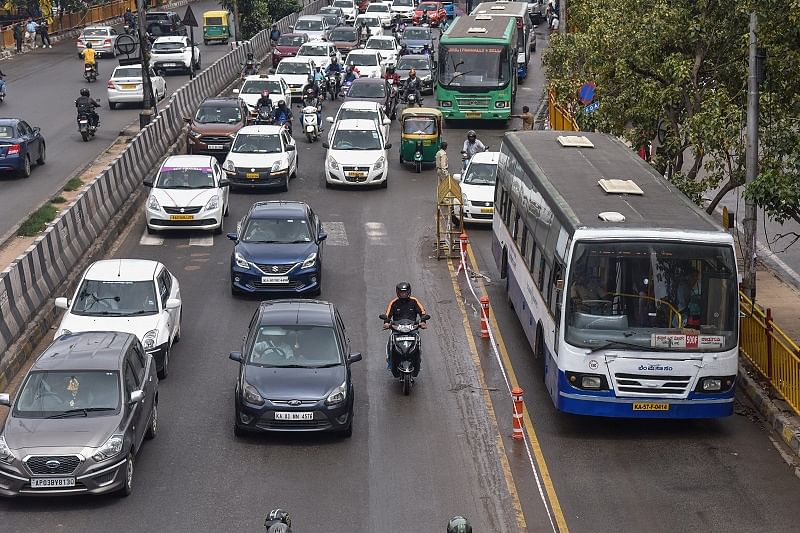
Bengaluru will have dedicated bus lanes along the Outer Ring Road (ORR) between Silk Board and Swami Vivekananda Road on a pilot basis. Currently, around 10% of BMTC buses operate along this 20-km stretch, ferrying 15,000 passengers per hour during peak hours.
To prep up for D-day, trial runs will be launched on October 20 between K R Puram and Marathhalli to assess the on-ground problems. The BMTC will also be dedicating 45 buses exclusively for this route.
With a dedicated lane, the BMTC expects the speed of the buses to increase from an average 7-8 kmph to 20–25 kmph. “With an increase in speed, the buses will be able to make more trips, which will improve the services of these buses. But, designating just a single lane will not suffice... there should be provisions to overtake slow-moving and broken-down buses,” says Sudeept Maithi, Senior Manager, World Resources Institute.
However, the project is expected to cause some hindrance to the vehicular movement initially, as the buses will have to switch to the left-most lane and other vehicles will have to move to the right. This could result in traffic jams, especially at the starting point.
“Even minute details must be taken into account. For a hassle-free movement of buses, it must be ensured that the bus lanes aren’t taken over by two-wheelers. This could be done by using metal chains between the bollards to demarcate the lanes instead of temporary tapes,” says Yogeesh Prabhuswamy, a techie, who did a recce on a bus from Baiyapanahalli to Bellandur on Thursday. He found most tapes joining bollards to be flying loose.
“As there are no direct buses to most places, it would be better to allow company buses to ply on these lanes to optimise the transport system,” Yogeesh adds.
As many service roads intersect with Outer Ring Road (ORR), people believe such intersection points would become choke points.
“Prioritising public transport is a very good move as buses are a lifeline for many in the city and people have been demanding bus priority lanes for quite some time. However, designating only the left lane for buses would result in choking of lanes and queueing up of buses, especially at intersection points, given that these are high-density corridors. For proper execution of the project, the government must consider these issues and plan accordingly,” says Shaheen Shasa from the Bengaluru Bus Prayanikara Vedike.
The government must also ensure efficient first and last-mile connectivity. It is important to have a pedestrian-friendly infrastructure to ensure the safety of pedestrians who commute by bus, says Shaheen.
Many a time, there will be bus bunching (queueing up of buses) at traffic signals and bus stops, which affects the punctuality of buses, thereby deteriorating the service.
“To ensure high efficiency of the bus lanes, the movement of buses should be tracked using a GPS system. The average interval between buses on a route has to be designed in such a way that buses do not lag due to one slow-moving bus,” says Sonal Kulkarni, a Bengaluru-based Urban Planner.
“The government should make adequate budgetary allocations to ensure this project is not shelved. The project should include signal synchronisation, providing proper bus bays at the bus stops, building better walking and cycling facilities for last-mile connectivity etc. It should not be a one-time effort to create lanes,” opines Sonal.
With the launch of the priority lanes, the BMTC believes the number of commuters will increase by 1.5 lakh per day.
“To ensure the success of the project, it is vital to generate more awareness about the project among the public and convince them to opt for public transport instead of private vehicles, which will help increase ridership,” says Sudeept.
To make it convenient for commuters, proper signage should be provided. Also, real-time information about the arrival and departure of buses, both online and offline, should be provided to the passengers to help them plan their trip accordingly, he says.